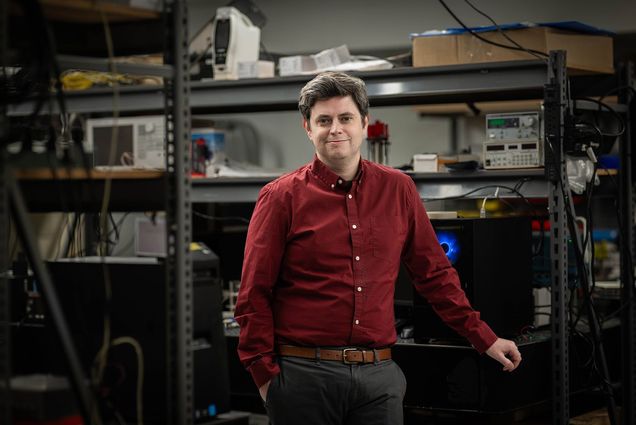Understanding how light interacts with living cells and tissues is the foundation of BU engineer Darren Roblyer’s medical device inventions, which can open up a whole new way of monitoring health
Here’s an experiment: Turn on your phone’s flashlight and place the tip of your finger over the small beam of light. What do you see? Your finger is illuminated, but the light isn’t passing entirely through. You’re looking at what’s called a diffusive glow, which is what happens when all the cells and molecules that make up your finger absorb and scatter the steady beam of light in an instant.

“The light changes direction millions of times so that it turns into a diffuse red glow,” explains Darren Roblyer, a Boston University College of Engineering associate professor of biomedical engineering. Understanding how light interacts with living cells and tissues is the foundation of his work. It might not be as simple as shining a phone flashlight on your finger, but the principles of diffusive glow apply to many of Roblyer’s medical device inventions for tracking health.
In the Biomedical Optical Technologies Lab, he and his team are testing ways to monitor biological processes—like blood pressure, oxygen levels, and disease progression—with light waves. For example, studying the way different wavelengths of light create patterns when absorbed and scattered can tell Roblyer about the metabolic signals in a person’s blood. Over the past several years, he’s developed a blood pressure monitoring device that does not involve a cuff squeezing your arm, with the aim of getting a more accurate reading than the current, sometimes uncomfortable, options.
“This technology measures the optical effects of what happens when your heart beats,” says Roblyer, who’s also a member of the BU Photonics Center. Each time your heart beats, blood flow speeds up and then slows down, and, at the same time, arteries expand and contract, increasing and decreasing the volume of blood in the arteries. “We’re measuring both of those things, and we are extracting a whole lot of information from those waveforms and then using that to predict blood pressure.”
